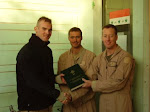Cardinal Müller: Gender ideology is ‘absolutely criminal’
Cardinal Gerhard Müller has issued a firm critique of gender ideology and modern push for LGBT acceptance, condemning it as “absolutely criminal” and warning that there is too much “naivety” in the Church on the matter.
“The clarity of the doctrine is essential for the Catholic Church,” Cdl. Müller noted, as he opined on the issues relating to doctrinal confusion and LGBT ideology affecting the Catholic Church today.
Müller, the former prefect of the Congregation for the Doctrine of the Faith, gave the comments in a wide-ranging exclusive interview with this correspondent for Pelican Media.
The 77-year-old German theologian – who took part in his first conclave earlier this year – spoke about the need for doctrinal integrity, the pervasiveness of LGBT ideology and the “naivety” of bishops to counteract it, the contradictions of a “synodal church,” and the positive steps being taken in America to counteract the spread of anti-Christian ideologies.
Not content with just condemning the omnipresent LGBT ideology, Müller also offered an analysis of its links to Communist and Gnostic ideology, and how at the heart of such movements, is an attack on the Divine institution of marriage.
“Which ideology was responsible for the death of more than 100 million people, also for the Gulags?” he quipped. “This is not only an accident in Communism, but it is a logical consequence of atheism, and no respect for life.”
The first part of Pelican+’s exclusive interview with Cardinal Müller is found below, and subsequent parts will be published in the coming days.
































